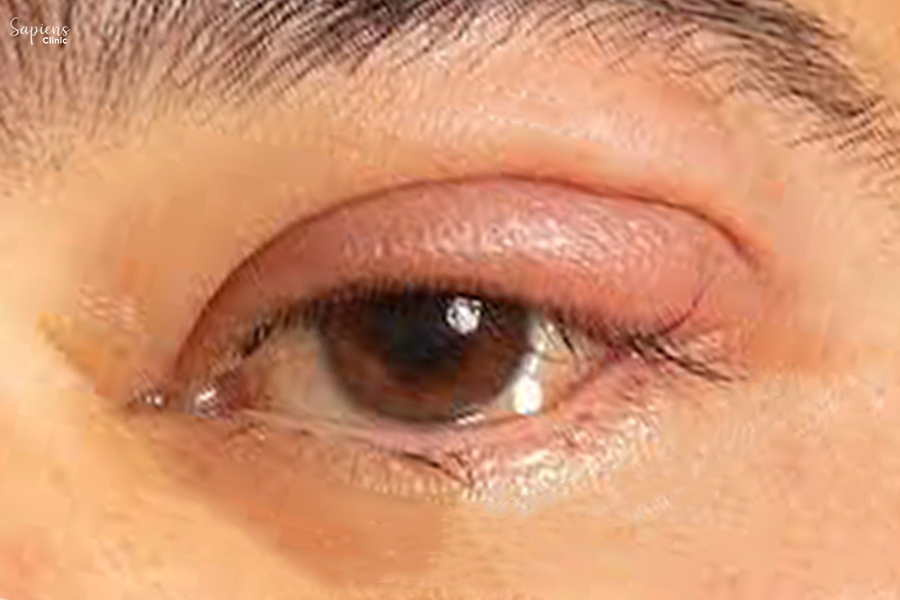Lacrimal Surgery in Malleshwaram
The lacrimal system plays a crucial role in maintaining healthy eyes by regulating tear production and drainage. When this system becomes blocked or impaired, it can lead to excessive tearing, recurring infections and significant discomfort. At Sapiens Clinic in Malleshwaram, our oculoplastic surgeons offer comprehensive diagnostic evaluations and a range of advanced lacrimal surgeries to restore tear flow and protect ocular health.
What Is Lacrimal Surgery?
Lacrimal surgery is performed to treat issues related to the tear drainage system. This system includes the lacrimal glands, puncta, canaliculi, lacrimal sac, and nasolacrimal duct. Blockages or infections in these structures can cause persistent watery eyes, frequent infections, or pain at the inner corner of the eye. Depending on the severity and location of the problem, various surgical options may be recommended.
Types of Lacrimal Surgeries We Offer
External DCR (Dacryocystorhinostomy)
This conventional and highly effective procedure is used to treat blocked tear ducts. An opening is created between the lacrimal sac and nasal cavity to bypass the blockage and restore tear drainage. It is often recommended for cases involving scarring from infection, sinus disease, or tumors. External DCR has a success rate of over 95%.
Endoscopic DCR
This minimally invasive approach avoids external incisions by accessing the tear duct through the nasal passage. A small telescope is used to create a new tear drainage channel. It is ideal for managing chronic infections, dacryocystitis, and cases with visible swelling near the inner corner of the eye.
Laser DCR
A modern, scar-free technique where laser energy is used to create a new tear duct channel through the nose. It reduces surgical time, blood loss, and external scarring, although minor risks like nasal burns may occur.
CDCR (Conjunctivodacryocystorhinostomy)
Recommended for patients with complete canalicular obstruction, often due to trauma or previous surgery. A new tear drainage pathway is created, and a special glass tube (Jones tube) is placed to maintain the connection between the eye and nasal cavity.
DCT (Dacryocystectomy)
Used when the lacrimal sac must be completely removed-typically in cases of tumors, chronic infections, or certain autoimmune disorders. This is often considered for elderly patients or those unfit for DCR.
Balloon Dacryoplasty
A catheter with a deflated balloon is passed through the blocked duct. The balloon is then inflated to reopen the passage, offering a less invasive alternative for nasolacrimal duct obstruction.
Lester Jones Procedure
An option when standard DCR fails, especially in complex canalicular disorders. A Pyrex tube is placed to maintain a tear drainage path between the eye and nose. This procedure requires expert precision and is performed endoscopically without facial incisions.
What to Expect Before and After Surgery
Before Surgery
A detailed evaluation, including diagnostic imaging, is done to determine the exact site of obstruction. You may be advised to stop certain medications like blood thinners and avoid smoking before the procedure.
After Surgery
Most procedures involve a short recovery with minimal discomfort. You may need to :
- Use prescribed antibiotic and steroid drops
- Avoid nose-blowing and rubbing the eyes
- Attend scheduled follow-ups to monitor healing
- Refrain from swimming or heavy exercise for 2-3 weeks
Why Choose Sapiens Clinic, Malleshwaram?
At Sapiens Clinic, our team of experienced oculoplastic specialists combines medical expertise with advanced technology to provide precise, minimally invasive solutions for lacrimal disorders. From first consultation to post-surgical care, our approach is patient-centric, focusing on long-term relief and improved quality of life.
Common Conditions Treated with Lacrimal Surgery
- Chronic watery eyes
- Dacryocystitis (tear sac infection)
- Canalicular obstruction
- Blocked tear ducts
- Lacrimal sac tumors
- Tear drainage failure after trauma or surgery
Book Your Consultation Today
If you’re experiencing chronic tearing, recurring infections, or discomfort near your eyes, don’t ignore the signs. At Sapiens Clinic in Malleshwaram, we specialize in identifying and treating lacrimal disorders with precision and care.
Book your appointment today and speak to our oculoplastic team about the right surgical option for your needs.
FAQs
1. What are the common signs of a blocked tear duct?
Common symptoms include constant watery eyes, sticky discharge near the inner corner of the eye, swelling or redness around the tear duct, and frequent eye infections.
2. How do I know which type of lacrimal surgery I need?
Our oculoplastic specialist will conduct a thorough evaluation including clinical examination and imaging tests to determine the exact blockage site. Based on the diagnosis, a suitable procedure like DCR, CDCR, or balloon dacryoplasty will be recommended.
3. Is lacrimal surgery painful?
Lacrimal surgeries are typically performed under local or general anesthesia. You may feel mild discomfort after the procedure, but it is generally well tolerated with pain managed through medications.
4. How long is the recovery period after lacrimal surgery?
Most patients recover within 1 to 2 weeks. Some swelling or bruising may occur initially, and follow-up visits are required to monitor healing and, if needed, remove any temporary stents.
5. Will there be any visible scars after surgery?
Procedures like endoscopic or laser DCR are performed through the nasal passage, leaving no external scars. External DCR may leave a small incision near the nose, but it usually fades well over time.

Leave a Reply